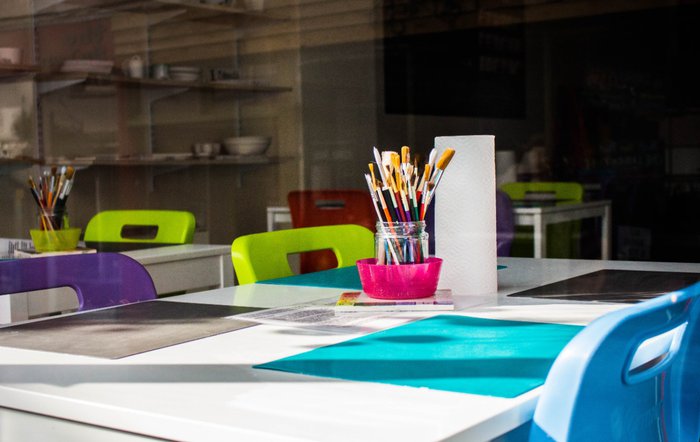Should children with blood cancer go back to school?
As schools begin to re-open following the coronavirus lockdown, we take a closer look at the issues around children with blood cancer returning to classrooms.

For many parents, the choice about whether to send their children back to school during the coronavirus outbreak is a difficult one.
But few parents are facing a decision as hard as the one faced by parents of children with cancer. They are worried about the risk of their child becoming seriously ill if they get the coronavirus. Yet at the same time they know that keeping their child and his or her siblings away from school is likely to affect their social and educational development.
This article doesn’t give answers or offer advice about what parents should do. Instead, we hope to provide information that will be useful in helping them to come to their own decision.
Until now (and it’s still official government advice), the advice for all children being treated for blood cancer has been the same as for adults with blood cancer: do not leave your home (this is called “shielding”). This is because having blood cancer weakens your immune system, putting you at much higher risk of becoming seriously ill if you get the coronavirus.
But looking across the population, we also know the coronavirus usually affects children much less severely than it does adults (and older adults in particular).
What does this mean for children with blood cancer?
One of the unanswered questions of the coronavirus has been what this means for children with blood cancer. If their risk of becoming seriously ill is higher because they have blood cancer, to what extent is this mitigated by the fact that they are a child?
We don’t yet have a definitive answer, but the Children’s Cancer & Leukaemia Group (CCLG) has now published data about children with cancer who’ve had the coronavirus, and this has given us a clearer picture than we had before.
As far as we know, no child with cancer has died from coronavirus in the UK.
The CCLG looked at what happened to 46 children with cancer who got the coronavirus. Just three of the 46 children needed hospital treatment, with two of these being treated in intensive care. There were another two children with moderate symptoms, 34 children with mild symptoms, and seven children who didn’t have any symptoms at all.
One of the children sadly died, but they died from their cancer rather than from the coronavirus, which means that, as far as we know, no child with cancer has died from the coronavirus in the UK.
We’ve been told that data from other countries has shown similar results, which means we can be reasonably confident in the results, despite the relatively small number of children included in the data. If anything, the figures above may overstate the level of risk. This is because some children with cancer are likely to have had the coronavirus without symptoms, so we don’t know about them. So while the data suggests that a child with cancer who gets coronavirus has a one in 23 chance of needing intensive care, the real risk is likely to be lower.
Of these 46 children, just over half had blood cancer (this was mostly leukaemia, but there were also two children with lymphoma). The outcomes for the children with blood cancer doesn't seem to be markedly different from that of the children who had different types of cancer.
Should children with blood cancer continue shielding?
After looking at this data and considering what they know about the biology of different types of cancer, the CCLG now thinks that only some children with blood cancer need to carry on shielding. The CCLG is a very credible, respected organisation, and the advice has been developed with the Royal College of Paediatrics and Child Health. So it’s worth taking their advice seriously.
It advises that the “extremely vulnerable” group needs to keep shielding.
The "extremely vulnerable" group includes children who:
- are having induction chemotherapy for leukaemia (intensive chemotherapy given in the first few weeks after diagnosis to clear as many leukaemia cells as possible)
- are having chemotherapy for relapsed disease (cancer that has come back) or refractory disease (cancer that hasn’t responded to treatment)
- are having immunotherapy (treatment that uses the immune system to work), including CAR-T treatment
- are having a targeted therapy (treatment that targets genetic changes in cancer cells – an example is imatinib) or an antibody therapy (treatment that uses artificial antibodies – an example is rituximab), or have finished this treatment in the last 6 months
- have had a donor stem cell transplant in the last 12 months
- have had a stem cell transplant using their own stem cells in the last 6 months
- are having replacement immunoglobulin therapy (treatment that gives you more antibodies if your levels are low)
For children in these categories, the advice is that they should not leave their homes, which obviously includes not going to school. Siblings who live with them should not go to school, either.
But there is now also a new group that the CCLG describes as “vulnerable”.
The "vulnerable" group, includes children who:
- are having chemotherapy for cancer, or have finished this treatment in the last 6 months
- are having treatment for leukaemia or lymphoma, or have finished this treatment in the last 6 months
- are on long-term maintenance steroids (an example is dexamethasone)
- have completed treatment for cancer but have ongoing chronic lung, heart, kidney or neurological conditions
The CCLG says that while these children are at higher risk of becoming seriously ill than children who don’t have cancer, the risk is low enough for them to go back to school, as long as the school can ensure good hygiene and social distancing measures.
Most children and young people who completed chemotherapy or radiotherapy more than six months ago aren’t considered vulnerable, so can follow your country’s general guidance on social distancing.
So why is the CCLG suggesting children in the vulnerable group go back to school when they are at higher risk than their peers?
The simple answer is that, thankfully, the effect of the coronavirus on children with cancer isn’t as bad as they’d originally feared. Given this, they think that for children in the “vulnerable” group, the impact of missing out on education and interaction with other children is likely to be greater than the risk from the coronavirus.
But we understand that for many parents, the decision to send a child who is in the “vulnerable” group to school will be really hard. And while the new data means we know more than we did before, there is still lots we don’t know. With so many types of cancer and different treatments, a data set of 46 children can only tell you so much.
Making a decision
Ultimately, it is down to parents to work out what is best for their children, after talking with their healthcare team. And it’s important to realise that over the next few months we’re likely to increase our understanding of which children with blood cancer are at the greatest risk, and more about how to reduce risks of transmission and effectively treat those who do get it.
A key part of our work over the next few months will be making sure we’re giving you advice and information based on the latest research. If you want to receive this, please sign up to our e-newsletter below.

Stay updated with the latest news
Sign up to our mailing list to receive the latest news, research, and ways you can help us beat blood cancer.
